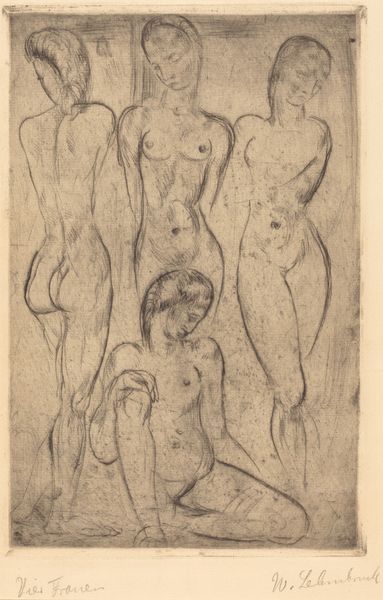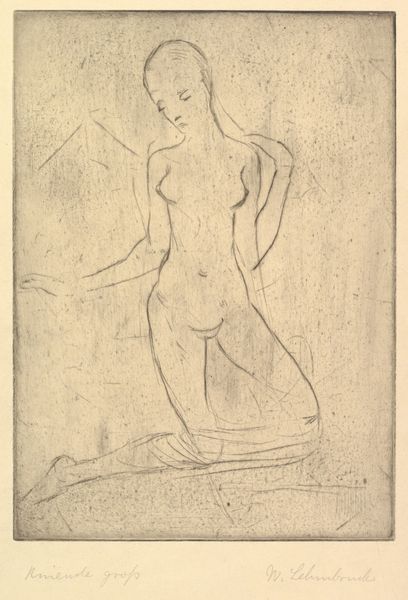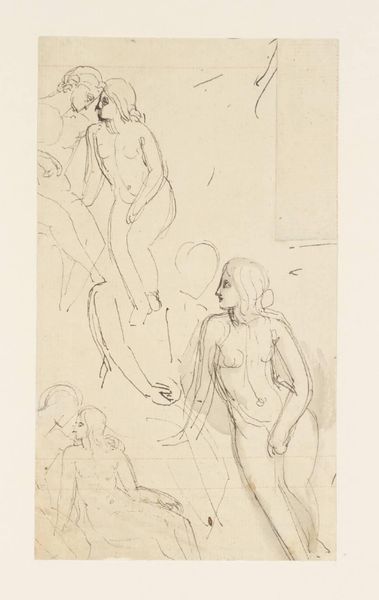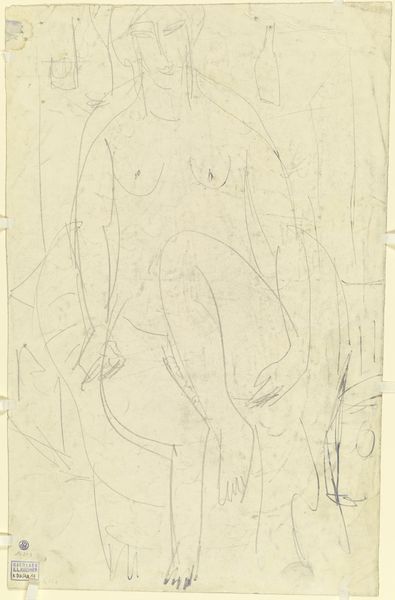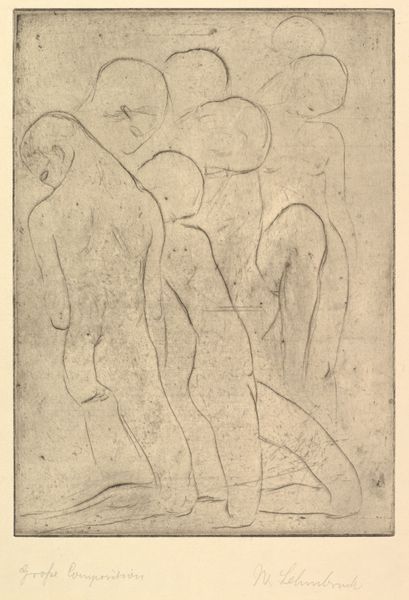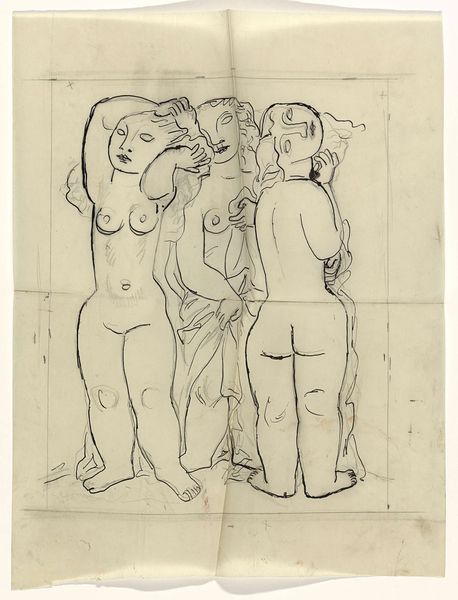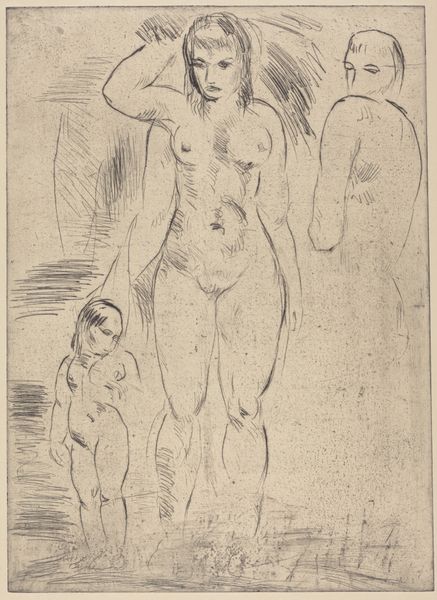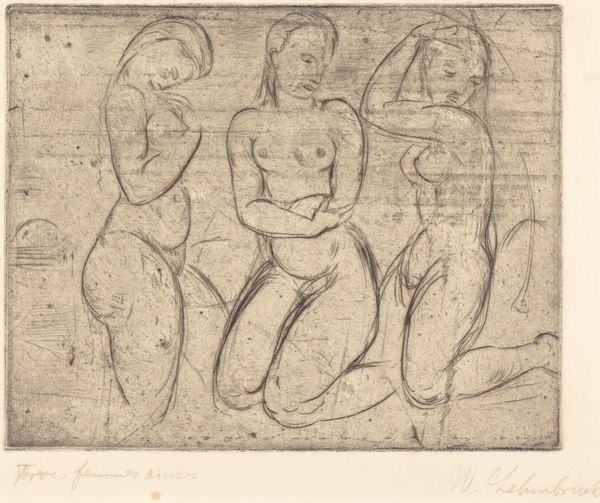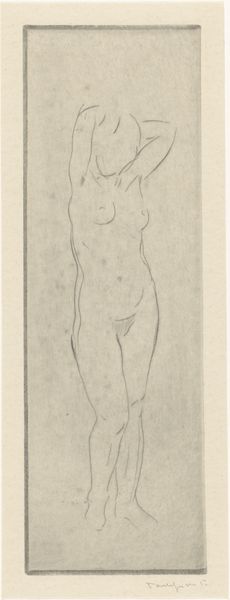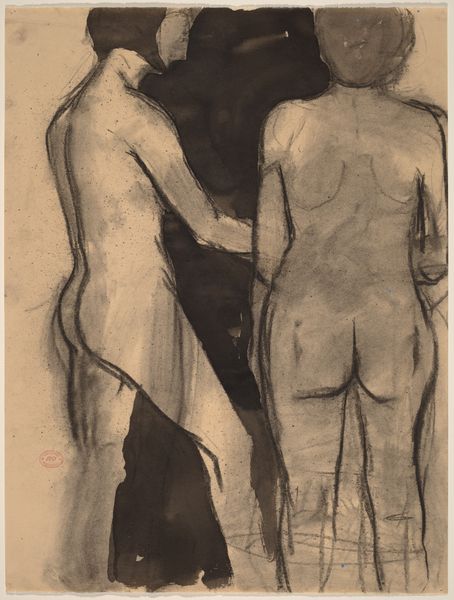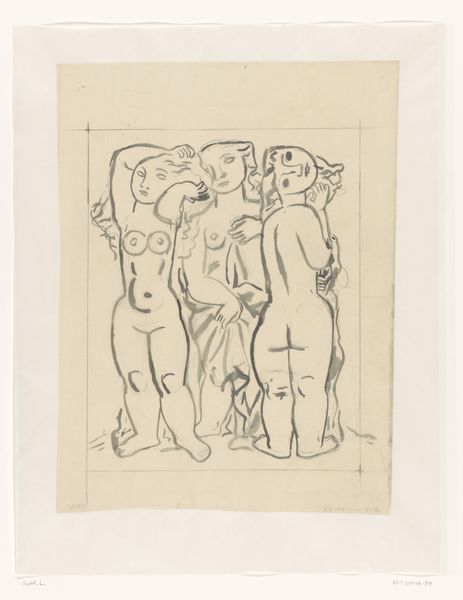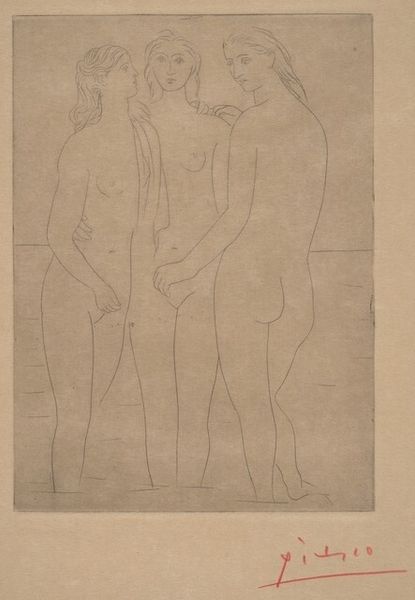
drawing, print, graphite
#
drawing
# print
#
figuration
#
expressionism
#
line
#
graphite
#
nude
Copyright: National Gallery of Art: CC0 1.0
Editor: Here we have Wilhelm Lehmbruck's 1913 graphite print, "Large Resurrection." It's so sparse, so ghostly. The figures are there, but almost fading away. How do you interpret this work, especially considering its title? Curator: I see this "resurrection" not just as a religious theme, but as a potent metaphor for social transformation and renewal after the devastation of the early 20th century. Lehmbruck created this just before the first World War; doesn't the ghostly rendering perhaps symbolize a hope emerging from a place of despair and social unrest? Editor: Absolutely, especially given Lehmbruck’s expressionist style, which often reflected inner turmoil. But where do the female nudes fit in? Is there a specific statement here related to gender or identity? Curator: It’s critical to remember the cultural context of the time. The female nude had been a prevalent symbol throughout the academic tradition. Lehmbruck reclaims and reinterprets this familiar theme to speak about both fragility and resilience, perhaps signifying women's vital role in the potential for societal rebirth and resistance in that tumultuous time. Consider also the deliberate attenuation of his figures; they speak of vulnerability. Editor: That’s insightful! It’s not just about passive subjects, but about the potential power dynamics embedded in even the most traditional artistic themes. Is the positioning of figures in the composition intentional, too? Curator: Precisely! Look at the gaze of figures as it relates to historical representation and the positioning of female bodies; all are active within and critical to social shifts. Thinking of intersectional perspectives is crucial when engaging with a piece like this. Editor: Wow, I see this in a completely different light now. This piece encourages such powerful reflection about more than just art itself! Curator: And that, precisely, is where art becomes truly powerful – as a mirror reflecting both our history and the urgent conversations of our present.
Comments
No comments
Be the first to comment and join the conversation on the ultimate creative platform.
